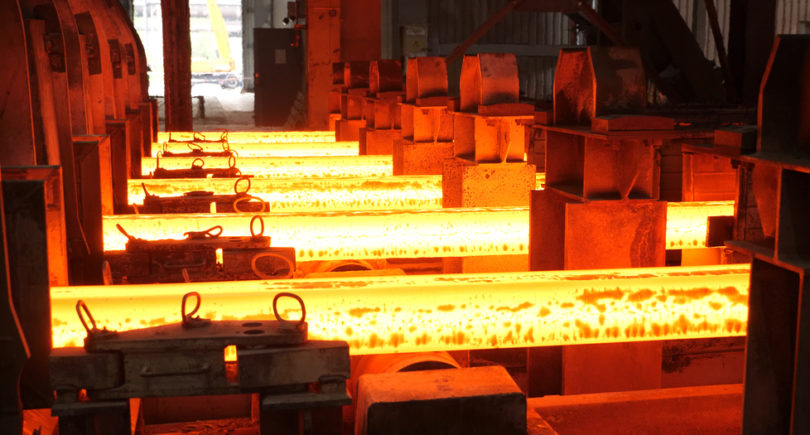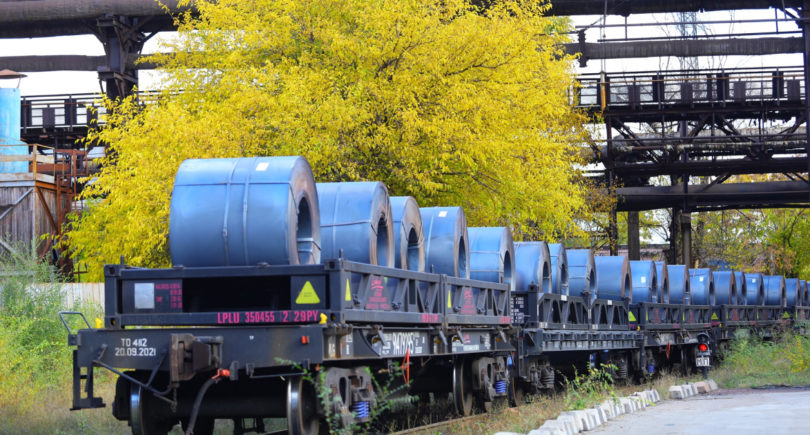
Posts Industry GMK Ukraine 3516 02 December 2022
Monthly losses of steel products export from Ukraine due to blocking of ports reach $420 million
The steel industry is the basis of the Ukrainian economy. Before the full-scale invasion of the Russian Federation, the mining and metal complex of Ukraine provided about 10% of GDP and 33% of exports. The domestic iron & steel sector is export-oriented, so the blockade of the Black Sea by the Russian military fleet strongly affected the industry. Currently, the possibilities of exporting steel products by rail are limited, and the EU seaports, to which steelmakers have reoriented, are unable to process all Ukrainian cargo.
Export ways
After the start of the war, the export routes of Ukrainian steel sector have changed. Thus, it became impossible to deliver iron ore to China, pig iron to the USA, Italy and Turkiye. The entire volume of exports was redirected to the EU – both for final consumers and for transit. The share of EU countries in the export of Ukrainian iron and steel increased from 34% in the pre-war months to 69% in April-September 2022. All 100% of iron ore supplies come from European countries, although before the war their share was only 45%.
The main export destinations of Ukrainian iron & steel products became Poland, Romania, and Slovakia, which are used as transit hubs for further transportation by sea or rail.
Iron & steel products are transported to the EU by railway (as of October 2022 – 55%) and by sea, from the port of Izmail (45%). At the beginning of the war, the share of the railway shipments was higher.
Railway transportation is possible through 13 railway border crossings with European countries. Five crossings are the most actively used for the export of iron & steel products: Chop-Corna and Uzhgorod to Slovakia, Izov and Mostyska-2 – to Poland, Batevo – to Hungary. In total, they account for 94% of exports by railway.
Queues and delays
The peak pressure on the Ukrainian railway system was in April-May. At that time, grain cargoes began to be actively transported to the EU. The total maximum shipped volume of all cargoes was about 3 mln tons in April. With the growth of traffic volumes at the border, the queue of wagons began to grow, reaching its peak in June – more than 40 thousand wagons. The wagons queue delays were up to 60 days during that period, according to Ukrainian steel companies.
The bottleneck was at the border crossings, and the main problem was the different gauges in Ukraine and Europe. According to the National railway operator Ukrzaliznytsya (UZ) the main reason of queues at the border was the inability to accept the required amount of cargo from the EU railway companies. Queues of wagons at European ports, deficit of wagons from European railway carriers, limited capacity of certain rail sections of European railways, duplicate control procedures in Ukraine and European countries are among the impacting factors.
According to UZ, the total nominal capacity of all border crossings is more than 3,400 wagons per day. According to the estimates of GMK Center analysts, the actual throughput is equal to 1,800 wagons per day (the maximum achieved daily volume of processed transportation, taking into account all related factors). This means that the current export potential (the maximum volume of transportation to European countries by rail) is about 3 million tons per month.
The potential of the railway
In order to reduce queues at the borders, from May to September 2022, the UZ introduced 16 conventions on the transportation of steel products. At the same time, since July 1, Ukrzaliznytsia has raised railway cargo tariffs by 70%.
Ukrainian iron & steel companies report 330% growth in railway transportation costs to Europe, compared to pre-war. Along with the deterioration of the market situation, the growth of transportation costs led to the losses of the iron ore business with a further stop of a number of facilities. As a result, the volume of iron ore traffic through the border crossings to European countries decreased by 2.5 times in September compared to the maximum in April.
The decrease in the volume of railway traffic has improved the situation with the utilization of border crossings. Delay time at the border has decreased to 11 days. As of November 2022, total Ukrainian iron & steel products are delivered to European customers in 18 days, according to the companies.
However, the reduction in border crossing delays is a result of reduced traffic volume, in particular thanks to the «grain agreemen» concluded in July 2022. Ukraine managed to unblock the export of grain and other food products from three sea ports – Odesa, Chornomorsk and Yuzhnoye. «Grain agreement» limited the flow of grains cargo to the railway, so Ukraine prevented the total collapse of the transport system.
“The export potential from Ukraine via railway has not changed during the war. The potential for traffic growth from the level of September is about 1 million tons. The problem of throughput capacity at the border will rise again with the improvement of the situation on global commodity markets and increasing demand for railway transportations,” notes the chief analyst of GMK Center Andriy Tarasenko.
Blockade of ports
Ukrainian seaports were closed at the beginning of the war due to mine danger and a military threat from the Black Sea Fleet of the Russian Federation. Currently, only the Danube ports continue to operate in the country, but they have relatively small capacities and do not solve the current logistics problems.
Ukrainian steelmakers were forced to redirect cargo flows to EU seaports, in particular, to Romania, Bulgaria, Poland, Croatia, and Germany. As a result, average distance to dispatch port for Ukrainian exporters increased by five times and shipping costs to port of destination raised by 3-4 times in average.
“The average monthly volume of steel products export through sea ports decreased by 79% compared to the pre-war period. From communication with market participants, we know that European seaports are relatively small and cannot handle the entire volume of Ukrainian exports. This also explains the queues of railway carriages that form at the borders of Ukraine and the EU. Given the existing logistical limitations, Ukraine does not have the prerequisites for increasing the production of steel products,” says the GMK Center analyst Andriy Glushchenko.
Blocked seaports lead to significant exports losses in iron & steel industry of Ukraine.According to estimates of the GMK Center, the monthly volume of such losses reaches $420 million. For the country, all opportunities to increase the production and export of ferrous steel products are connected with the unblocking of ports.





